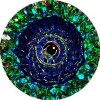Posted 25 August 2013 - 06:32 PM
So, the title explain it i guess, but here's why i came with this question: I am currently making a touchscreen password(yup another <_</>).
I am using it correctly?
If you need the rest of the code just tell me and i'll post it
Thx Crackroach
--That's just for information
key = {}
key.digit = {}
key.digit[1] = {1; x; y}
key.digit[2] = {2; (x * 2); y}
key.digit[3] = {3; (x * 3); y}
key.digit[4] = {4; x; (y * 2)}
key.digit[5] = {5; (x * 2); (y * 2)}
key.digit[6] = {6; (x * 3); (y * 2)}
key.digit[7] = {7; x; (y * 3)}
key.digit[8] = {8; (x * 2); (y * 3)}
key.digit[9] = {9; (x * 3); (y * 3)}
-- Check for the mouse click position
local function checkPosition(btn, nmb)
b = 1
for a = 1, 9 do
if mouseW == key.digit[b][2] and mouseH == key.digit[b][3] and btn == 1 then
mon.write("key pressed"..key.digit[b][1])
table.insert(password, key.digit[b][1])
mon.write("pass :"..tostring(password[nmb]))
end
b = b + 1
end
endI am using it correctly?
If you need the rest of the code just tell me and i'll post it
Thx Crackroach


